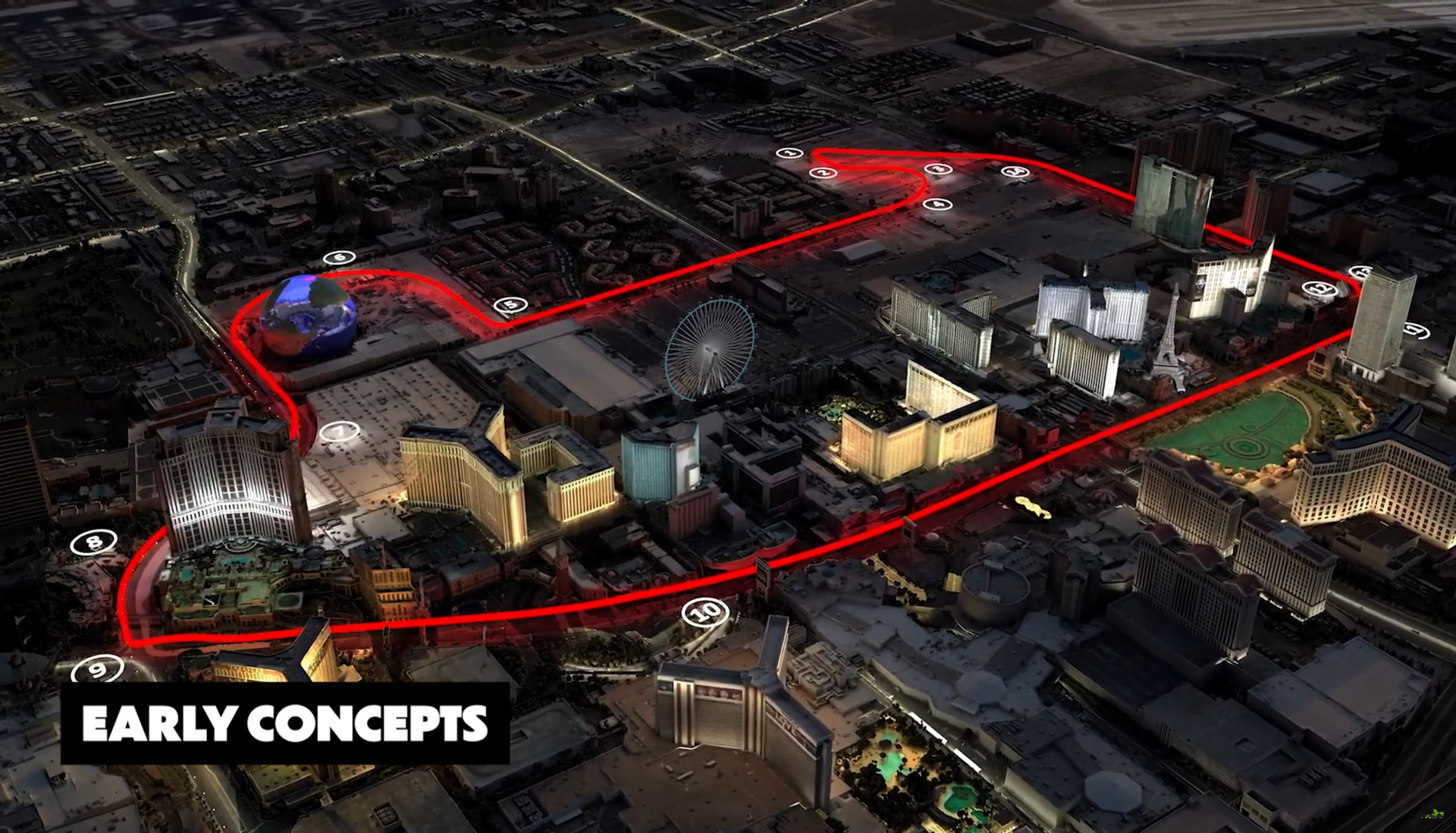Formula 1 will be going to Las Vegas next year for the first time since 1982. In the four decades that have passed, a lot has changed, both in the sport of F1 and in the city of Las Vegas. So what does it take to build a Grand Prix circuit surrounding of some of the biggest hotels on earth?
Matt Amys decided to find out, and spoke to Dr. Carsten Tilke, one of the engineers behind the new track in Las Vegas—as well as other recent Formula 1 racetracks. Together, they discuss everything that goes into a project like this.
Tilke works for Tilke Engineers & Architects, the company his father founded, that has been designing F1 tracks for decades. The process of getting this track going alone has taken nine years, as F1 has fought to balance the countless requirements of drivers, viewers, attendees, and, perhaps most limiting of all, the people who just happen to be in Las Vegas and occasionally want to leave their hotel rooms.
Read: Tickets To 2023 Las Vegas Grand Prix Start At $500 And Go All The Way Up To $10,000
In order to make balancing all of those priorities a little easier, F1 actually decided to buy a 39-acre plot of land in the city, for the princely sum of $240 million. That’s where this temporary street track will be anchored by a permanent paddock, grandstand, and hospitality area. It will also act as a manufacturing base, where thousands of concrete crash barriers will be made, to later be distributed around the track.
That’s made possible as a result of the track actually being promoted by the sport of Formula 1 itself, not by a third-party entity, as are the other circuits on the calendar. With that sorted, Tilke Engineers & Architects had to find a way to design a track that also included the Las Vegas strip, which was described as a necessary prerequisite for the Grand Prix.
“If you go to Las Vegas, you need to use the strip,” said Tilke. “That was our goal, and it was not so easy to find a track working with this part of the strip included. [There were] 10 different versions, maybe, and at one point there was only one that was really feasible.”
To find that one feasible track, they had to work the casinos to make sure that tourists could still get out and about when the track was being used, and that they could still receive the deliveries necessary for a big hotel to run. Moreover, there are important safety considerations for an F1 circuit, as well the need for marshals, medical staff, and others to access the track, not to mention the need for the racing to be good.
“Of course, in a city, you are restricted by the buildings, but we also try then to get the most out of it,” said Tilke. “Sometimes you can influence [the racing] a bit. If the roads are wide you can shift them a little bit, [adjust] where to position the track, how is the radius of the corner, try to use corner combinations, where you have attack, overtake, counter-attack, so you have, like, cool racing action.”
We’ll see how successful Tilke and his team have been in a little under a year when the first modern Las Vegas Grand Prix takes place, from November 16-18, 2023.
https://www.youtube.com/watch?v=CMLjO0XyCpU&t=606s





